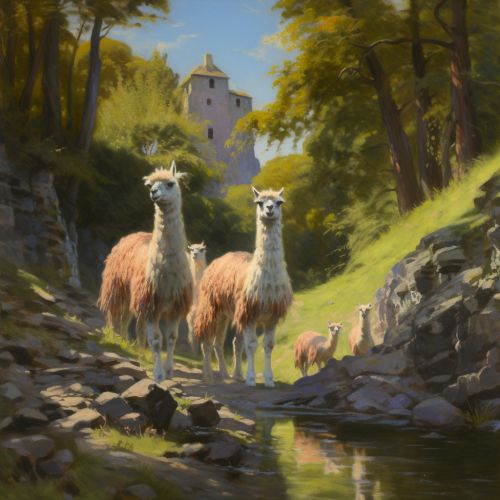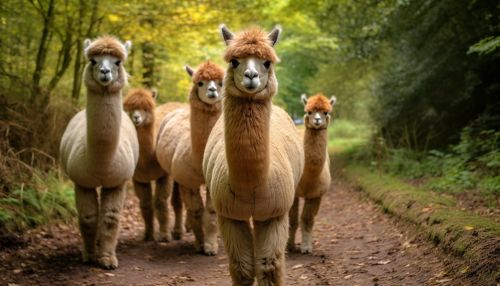Camelid
Taxonomy and Evolution
Camelids are a group of even-toed ungulates within the family Camelidae. The two main branches of the camelid family are the New World camelids, which include llamas and alpacas, and the Old World camelids, which include dromedary and Bactrian camels.
The Camelidae family, along with the deer, bovines, and antelopes, belong to the order Artiodactyla, also known as the even-toed ungulates. This order is characterized by the presence of an even number of toes on each foot and a stomach divided into several compartments for efficient digestion of plant materials.


The evolution of camelids is a topic of much research and debate among scientists. It is believed that the camelid lineage diverged from the rest of the Artiodactyla around 40-45 million years ago, during the Eocene epoch. The first true camelids appeared in North America during the Miocene epoch, around 20 million years ago. These early camelids were small, forest-dwelling animals that later evolved into the larger, desert-dwelling species we are familiar with today.
Anatomy and Physiology
Camelids are known for their unique physiological adaptations that allow them to survive in harsh desert environments. These adaptations include a hump or humps of fat, long legs, and a unique method of temperature regulation.
The hump of a camelid is not, contrary to popular belief, filled with water. Instead, it is a reservoir of fatty tissue. In times of food scarcity, this fat can be metabolized to provide both water and energy for the animal. This adaptation allows camelids to survive for long periods without food or water.
Camelids have long legs, which help them to navigate the rough desert terrain. The length of their legs also keeps their body further from the hot ground, helping to regulate their body temperature.
Another unique adaptation of camelids is their ability to fluctuate their body temperature throughout the day. This allows them to conserve water by reducing the amount of sweat they produce. They can tolerate a body temperature range from 34°C in the cool morning to 41°C in the heat of the day.
Behavior and Ecology
Camelids are social animals, often living in groups called herds. These herds usually consist of one dominant male, several females, and their offspring. The dominant male is responsible for protecting the herd from predators and other threats.
Camelids are herbivores, feeding primarily on grasses and shrubs. They have a unique method of feeding, known as "rumination", where they regurgitate partially digested food from their stomach and chew it again to extract as much nutrition as possible.
Camelids have a significant impact on their ecosystems. Their feeding habits can influence the distribution and abundance of plant species, and their dung provides a valuable source of nutrients for other organisms.
Domestication and Uses
Camelids have been domesticated by humans for thousands of years. The dromedary camel, for example, was domesticated in the Arabian Peninsula around 3000 BC. Domesticated camelids are used for a variety of purposes, including transportation, milk production, and wool production.
In many parts of the world, camelids are still used as beasts of burden. They are capable of carrying heavy loads over long distances, making them invaluable in desert regions where other forms of transportation are impractical.
Camelid milk is a staple food in many cultures. It is rich in vitamins and minerals and is often consumed fresh or used to make cheese and yogurt.
The wool of camelids, particularly alpacas, is highly prized for its softness and warmth. It is used to make a variety of textiles, including clothing, blankets, and rugs.
Conservation and Threats
While some species of camelids, such as the dromedary and Bactrian camels, are domesticated and widespread, others are threatened or endangered. The wild Bactrian camel, for example, is listed as critically endangered by the International Union for Conservation of Nature (IUCN).
Threats to camelids include habitat loss, hunting, and competition with livestock for resources. Conservation efforts for these species often focus on habitat protection and sustainable management practices.
